Here we are again, PSone Nostalgia! In the last part of this three-part review, I took a look at the 1998 PlayStation classic, Spyro the Dragon... Now, I'll be taking a look at the sequel to the impressive PlayStation game... Spyro 2: Ripto's Rage!
All of this aside, Spyro the Dragon was a massive hit and a bestseller. It immediately put Insomniac on the map and everyone loved the purple dragon. The game was no cheap attempt to one-up Mario or Sonic, much like Crash Bandicoot. That orange marsupial immediately caught on with gamers, and so did the purple dragon. So of course, a sequel was on its way for release in fall of 1999 – just one year after the first game was released. Again, this was no different from Crash Bandicoot and its sequel. (I know, the Crash comparisons are getting irritating!)
Like Naughty Dog’s 1996 game, Spyro the Dragon did have its fair share of problems. In the first Crash Bandicoot game, it was the controls, the save system and a few other things that plagued what was otherwise a good game. In Spyro the Dragon, it was the easy difficulty level, the short length and the lack of mini-games and different challenges. When Naughty Dog created Crash Bandicoot 2: Cortex Strikes Back, they took the flaws from the first game into consideration and made lots of improvements. The controls were far better, you could save anytime and more variety was added: Crash could use jet-pack in some levels while other times he could ride a jet-board on the river levels. They did the same for the third and final installment in their series, adding even more ways to play. Insomniac did just that for Spyro 2: Ripto’s Rage.
One of the first noticeable improvements is the story. What’s the story?
 |
| He's not convincing... Until he stands on top of Gulp's head. |
Outside of the Dragon World is a world called Avalar. It has been taken over by the evil Ripto, a puny little villain who has quite the temper. He doesn’t have much depth, but he’s certainly a far more interesting villain than Gnasty Gnorc. Why is that? Because there are cutscenes and he is present in a lot of them, plus he seems to have more a personality than the first game’s big brute. He’s the typical ridiculously foppish villain with his size, his big horn on his head and his flashy cape. His temper also makes him a pretty comical villain, especially when he deals with his dimwitted brutish beasts – Crush and Gulp.
Who lives in Avalar? Not dragons, but rather fairies, animals, fauns and all kinds of things. It’s certainly a lot more diverse than the Dragon World, that’s for sure. In the opening cutscenes, we are introduced to the other main characters: The Professor, Hunter and Elora. The Professor is a little mole who is of course the brains of the cast. Hunter is an athletic but often dim-witted cheetah, but he’s a lot of fun. Elora is a quiet faun who is no damsel-in-distress; she’ll help you along the way alongside Hunter. She kind of lacks a good personality; first she has something of an attitude but is generally a lot nicer later on in the game. There’s also a fairy named Zoe who will remind you of certain things like the dragons did in the first game; she also saves your progress when you complete a level, a mission or whenever you walk through an area that she’s in. Oh, and as for the voice acting... Well it’s nothing special. Some of it is very reminiscent of the cheesy kids shows you saw on TV in the 90s. Let’s just leave it at that, but there are some genuinely amusing and funny moments sprinkled in the writing.
So where does Spyro come in? Ripto drops the fact that he despises dragons, which leads the Professor to seek out a dragon. With his wits, he goes to a world called Glimmer and tools a portal. In the Dragon World, Spyro tells Sparx that he can’t stand the miserable weather. He decides to take a vacation to the sunny Dragon Shores (a level that just seemed to come out of nowhere), but due to the work of the Professor, he ends up in Glimmer instead. Little by little, he learns what he needs to do before he can get to his paradise.
Already, the story is stronger than the nonexistent one in the first game. Spyro now has characters he can interact with, ones that don’t stand a chance against our villains. In the first game, all you had was dragons and fairies... The dragons could easily torch Gnasty, so the developers had them disappear when you released them. The fairies? What can they do? Spyro 2’s team made the right decision with having a cast of animals that are not much bigger than Spyro, but they aren’t entirely weak. The story just makes more sense because of this.
Already, the story is stronger than the nonexistent one in the first game. Spyro now has characters he can interact with, ones that don’t stand a chance against our villains. In the first game, all you had was dragons and fairies... The dragons could easily torch Gnasty, so the developers had them disappear when you released them. The fairies? What can they do? Spyro 2’s team made the right decision with having a cast of animals that are not much bigger than Spyro, but they aren’t entirely weak. The story just makes more sense because of this.
 |
| Ummm... Lizard... I wouldn't laugh if I were you... |
One downfall is that the other characters aren’t as well developed. Spyro is still a bit impatient like he was in the first game, but he seems to have matured since his first big adventure. The Professor, Hunter and Elora seem to lack in this department. The Professor is essentially the smart one, Hunter is the brawns and Elora is a “take charge” type but isn’t a cliché. Likewise, Ripto isn’t the best villain out there but he’s still better than Gnasty Gnorc. The story is standard, but enough to support the entirety of the game.
So Spyro 2 has a better story than its predecessor. It’s not perfect, but it’s serviceable. It’s on par with the storylines in the Crash Bandicoot games. But this story works because now, every level and home world doesn’t feel as lonely as the levels in Spyro. Free a dragon, torch some enemies... That world is now empty. But in the various levels of Spyro 2, there are locals. In the first level in the Summer Forest home world, Glimmer, there are kanga rats in the different areas. Zoe will be there to save your progress and you’ll occasionally run into Hunter or Moneybags in other levels.
Who is Moneybags? If anything, he was the character that you wanted to torch. He’s a plump bear in a black waistcoat (nice little jab at fat cats there, Insomniac!) that only cares about one thing: Gems! Precious gems! You have to pay up when it comes to certain things. Moneybags will teach you things such as swimming, ladder climbing and head bashing. These new abilities add more to the gameplay, Spyro the Dragon could’ve used something like that. At other times, you have to pay him to unlock levels or activate something like an elevator or a bridge. Yes, he’s a pain.
So now onto the gameplay... What an improvement...
You have all your basic abilities from the first game, and the two power ups (supercharge and superflame) also reappear. The developers also added the “hover”, where you can pick yourself up in the air after gliding in order to reach a tricky height. It makes things a little less frustrating, especially if you had problems reaching certain areas in the first game.
In Spyro the Dragon, the objectives were simple: Go into a level, free dragons, get all the treasure and occasionally catch a thief with a dragon’s egg. Those basic tasks are back, minus the egg bits since you’re not in the Dragon World. It’s not that simple though.
This time around, gems don’t come from defeated enemies. Instead, you get shiny star-like orbs. Get enough and you can unlock a power up: Supercharge and superflame from the first game return. Then you also have flight and invincibility. A timer will appear each time you collect the power up, which you have to obtain by going between two spires that show your power up. What’s great about this is that you can now fly on certain levels, rather than just the Flight levels. It also adds even more variety to the game.
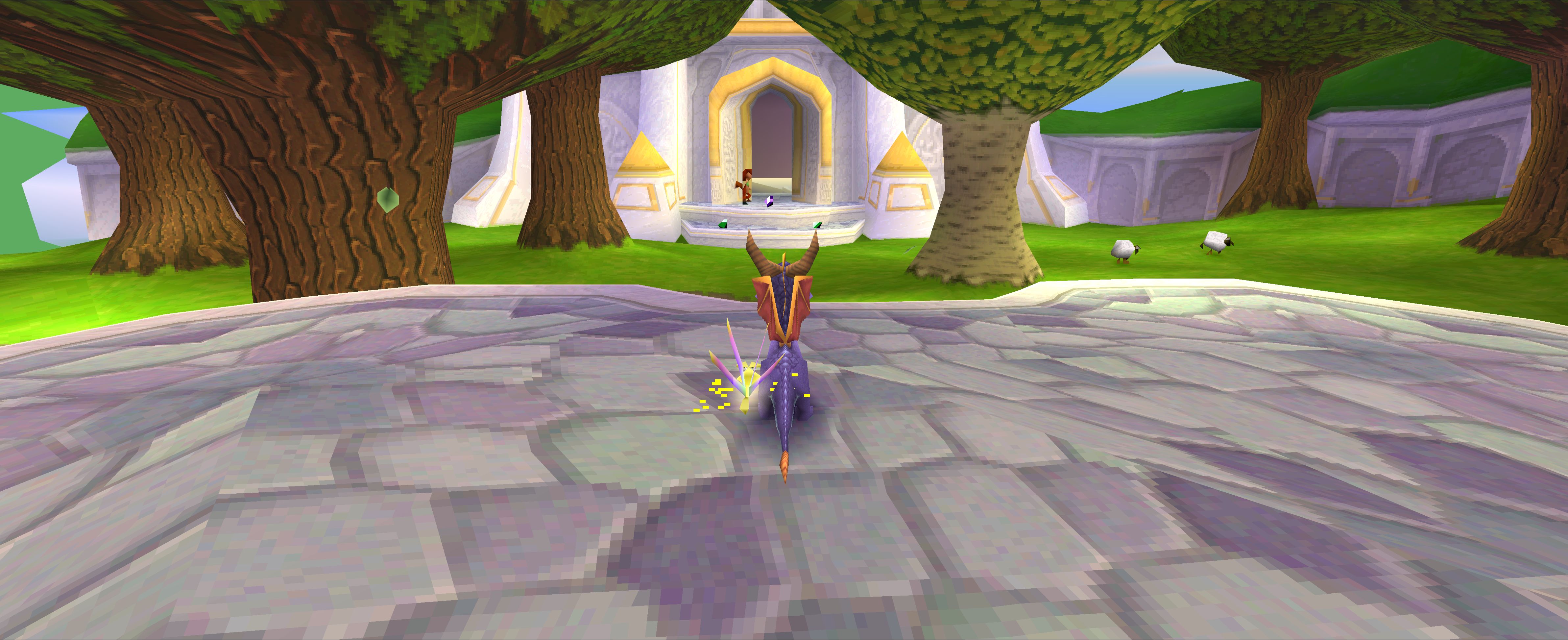 |
| Summer Forest. |
Now the objective of each level (up until the third home world) is to obtain a talisman. You’ll get it once you get to a certain point in the level, then the portal that’ll take you home appears. Each level has its own little storyline, and cutscenes play when you enter and exit for the first time. Usually the objective is to solve a problem that the locals are having, and then they’ll give you the talisman. You need to collect them all, of course!
But that’s not the end of it. There are also other things you have to do. The first of which is collecting orbs, emerald green spheres with golden rings, which are very powerful and are the reason why the Professor was able to get Spyro to Avalar. The orbs were scattered after Ripto invaded so he couldn’t find them, so now it’s up to Spyro to get them all. Orbs are given to you when you complete tasks for others.
There are many different tasks that add to the fun. In some tasks, you have save one or more locals. In others tasks, you will have to do something for them or the town. You get a good taste of this in the first level alone (Glimmer), whether it’s helping kanga rats advance to a certain location or helping them do something, such as lighting up lamps or shooting pesky lizards... Things they can’t do.
As you progress through the game, the different tasks get more challenging and fun. Others can be frustrating, but at least that makes a game a bit longer and less easy. Some frustrating missions involve escorting characters to areas without accidentally letting them get hurt... This can get annoying because the creatures you have to protect walk in erratic directions... Almost is if they want to get hurt. But I still welcome these kinds of missions because they make the game longer.
Again, that’s the problem I had with the first Spyro. Without missions like that, it just felt a little too easy and not as challenging. At other times, you can find orbs in hidden locations in different areas. This addition to the game really makes for an improvement, because it gives you more to do than just defeating enemies and collecting treasure.
The gameplay, in short, is a big improvement.
The individual levels are fun, big and loaded with different passages and secret areas. The design is great, but what’s different about this game is that none of the levels are based on the home worlds they are located in. Instead, each level takes on a totally different theme. In the first home world, Summer Forest, you’ll already see how different each level is. The dark and mechanic Hurricos is certainly nothing like the bright and colorful Sunny Beach, nor is the underwater techno-Atlantean Aquaria Tower anything like the Himalayas-inspired Colossus. But some levels do share some similarities: The inhabitants of Idol Springs and Colossus are very similar in design. In Autumn Plains, Skelo’s Badlands and Crystal Glaciers have locals that are pretty much the same humanoid species.
 |
| The goat is probably thinking, "... The hell is he doing?" |
Once you get to Autumn Plains, the quality of the level design and gameplay improves vastly. You’ll even see that two realms are at war with each other! That’s right, the developers really tried to add some interesting backstories to the different levels you go to. In Autumn Plains’ case, it’s Zephyr and Breeze Harbor. Zephyr’s blob-like land blubber creatures are at odd ends with the avian “breeze builders” from Breeze Harbor. It’s interesting how you take both sides in each level.
And some of the characters in the levels make for some comedic moments in cutscenes. In Shady Oasis, the hippos become huge when they consume berries. You need this to break through doors and gates. In the level’s closing cutscene, there’s a humorous bit where the hippos look for missing berries – cut to the big one trying to hide the berry that he’s eating while tons of others are around him. It’s actually kind of amusing. Sometimes the humor borders on a darker side... In a way. It’s kind of weird, really.
Take Magma Cone for instance. The little faun creatures are partying, and one just nonchalantly pushes another one into the boiling lava below... They continue partying. That’s kind of dark, don’t you think? Well, I still get a kick out of it because it’s in a family-oriented game. Other cutscenes are unexpectedly funny. At the end of Idol Springs, we see the locals roasting things at a campfire. An evil idol shows up, you think it’s going to eat everyone... Nope, it just happily roasts a sausage with them!
 |
| I guess that idol just simply gave up being evil... |
At least the writers tried to punch these things up a bit. It’s certainly more interesting than seeing dragons being freed and hearing “Thank you for releasing me!” for the umpteenth time. (Though I will admit, some dragons have, sometimes unintentionally, funny moments) Good stuff. Sometimes the creatures you meet in different levels have something funny to say. They at least have some sort of personality and it only makes the worlds they live in much more interesting. Again, all good...
Once you get the third home world – Winter Tundra – things get a little different. Collecting a talisman in each level is out of the question, now you just have to muster up enough orbs to get into Ripto’s Arena and fight him.
What’s also different is that you have to backtrack this time around. In the first game, you could just collect everything in each level you went to. But since there are abilities that you can only learn later on in the game, there are some things you can’t do nor can you complete in a level. A good example is Glimmer, which has a section you can only reach by climbing a ladder. Moneybags teaches you how to climb ladders when you get to Autumn Plains, so... You have to go back.
It makes it more fun in a way, because you can revisit those worlds even if you completed a good portion of them. If you’re the kind to just get every talisman and just fight the bosses, then you have a lot of work to do. That could also be more fun, because if you get 100% on almost every other level... Then there are only a few to revisit.
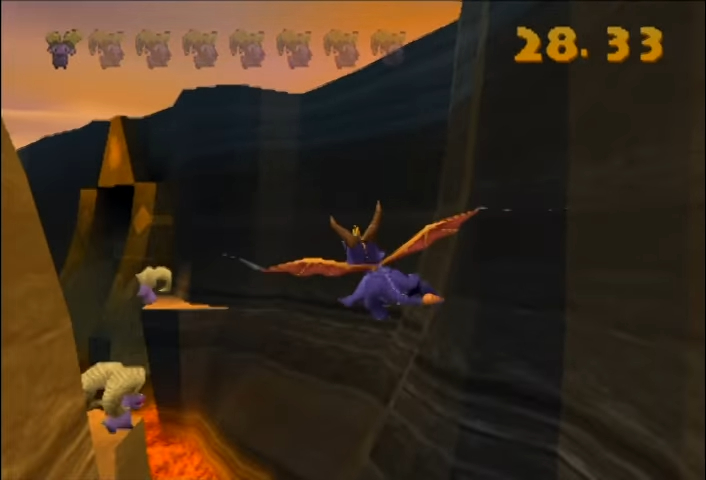 |
| Canyon Speedway. Just like the Grand Canyon, but... With lava! |
Flight levels are back, but this time they are called “Speedways”. I will say, they are much more fun than the Flight levels in the first game, which to me were the only downfall of the entire game. The timed challenges are essentially the same, but you don’t have to just fly in these levels. You can also run around and destroy land-based things in the challenges. You can still fly through things like rings and arches, but you can run around and charge things like racecars and snowmobiles. Oh, and it’s supercharge too! But that’s not the only thing you can do. There are also other challenges that Hunter has prepared for you, such as trying to keep with him while he flies around or paragliding through rings.
Boss battles are more fun and challenging too. Instead of simply finding your rival and doing a few things to take him down, you take them on like you do in the Crash Bandicoot games. All three of them (Ripto and his two beasts) have health bars and have some sort of pattern that you have to memorize in order to outwit them. Oh, and the final battle with Ripto? Far more exciting than the showdown with Gnasty Gnorc...
One letdown is the final level, Dragon Shores. It’s nothing like Gnasty’s Loot where you could collect tons of treasure or the final level in the next game. Here, you basically participate in some old-fashioned carnival challenges to win tokens. Win ten and you basically have beaten the game, you can unlock the Dragon Shores movie theater and watch cutscenes... Okay... I will admit, the rollercoaster is fun. Also, why are gnorcs of all things running this place? Were they survivors who happened to bury the hatchet? Or did the dragons simply punish them for everything that happened in the first game? I’m looking too much into this...
 |
| "He's gonna whack me with that cane! I'm sure of it!" |
So yes, Spyro 2: Ripto’s Rage is big improvement over the original in terms of gameplay... I actually think that this is the best game of the series on those terms; it’s not only an upgrade from the original but it’s also a lot of fun. Some of the different challenges really add a lot and bring more to these different worlds then ever.
The level design? Great as usual, since the first game boasted great level design. The first game mostly had fairy tale-like settings with big castles, bright green grasslands and mountains. Sometimes there would be a surprise like the swampy Beast Makers world or the more ugly seaport-like Gnorc Gnexus, in addition to some deserts and icy worlds.
Here, there are all different kinds of places. All the levels are different and unique; they all have colorful inhabitants and enemies, and then some. A few levels hark back to the style of the first game, which is welcome. Something like Breeze Harbor or Hurricos reminded me of some levels. But then you have something like Zephyr, Skelo’s Badlands or Scorch that are certainly different. There’s a diverse selection of themes for the levels: Deserts, grasslands, mountains, temples, bogs, beaches and many other things. Towards the end of the game, you’ll come across some pretty creative levels such as Robotica Farms and Metropolis, two levels who are in a feud. While we did have a robot for a boss in the first game (Metalhead), we actually have a whole farm run by robots! Then there’s Metropolis, a futuristic inside a huge dome-like structure. Cool stuff! Since the two are at war, there are some surprises thrown in such as sheep in flying saucers hell-bent on wreaking havoc! How is that not awesome?
Now with great level design, you need fitting music. Spyro 2, like its predecessor, has ex-Police drummer Stewart Copeland on board. His music once again fits the atmosphere of each level, but retains a classic Spyro feel. He tries out new styles, but some levels do have the instruments and sound that defined a lot of the first game’s levels. Almost all of the tracks are great, some of them do get a bit repetitive. (Magma Cone’s music kind of annoys me, particularly that “Aum nuau!” sound effect that sounds like a grumbly “Aw no!”) I still put the soundtrack on par with the original; it combines the first game with an all-new sound and feel that just works so well. I can’t praise it enough.
~
So all in all, you have a game that is longer and more challenging than its predecessor. You get some new abilities, the design of the game is a lot different, and there's more to do. The design is also creative much like the first game, and there music goes perfectly with all of it. Spyro 2: Ripto's Rage is still fun to this day because of all this. The variety of missions, the main gameplay and several other things make it more than a classic. It's one of the quintessential PlayStation platformer games.
In part three, I'll finish things off with the third installment in the series - Spyro: Year of the Dragon!
All gameplay images are courtesy of the uploaders on the Spyro Wiki and GameFAQs!
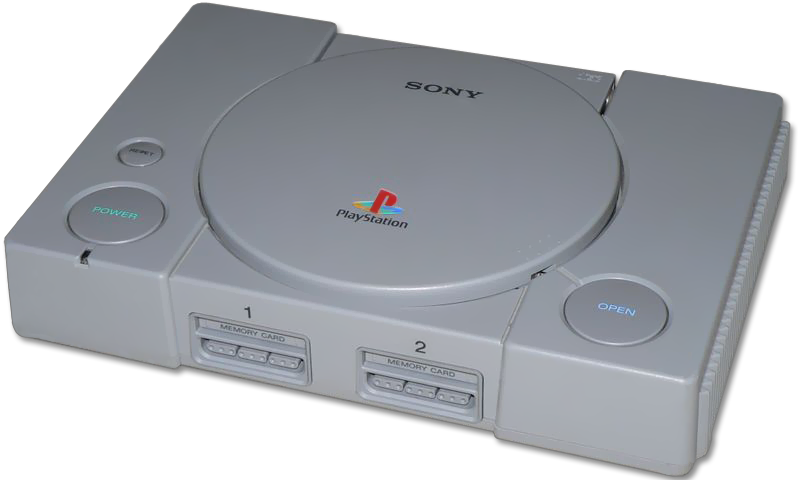
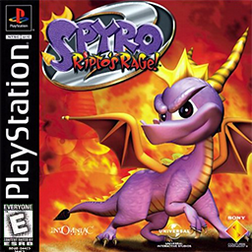

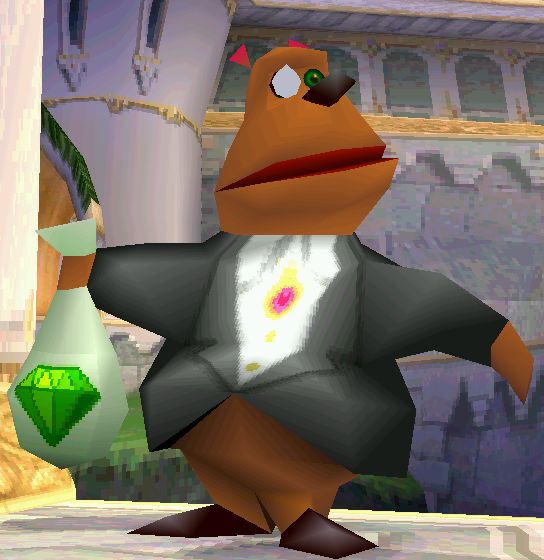
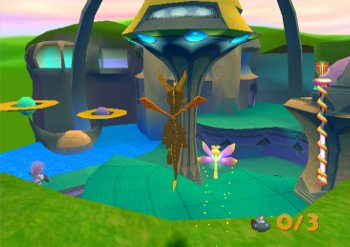
No comments:
Post a Comment